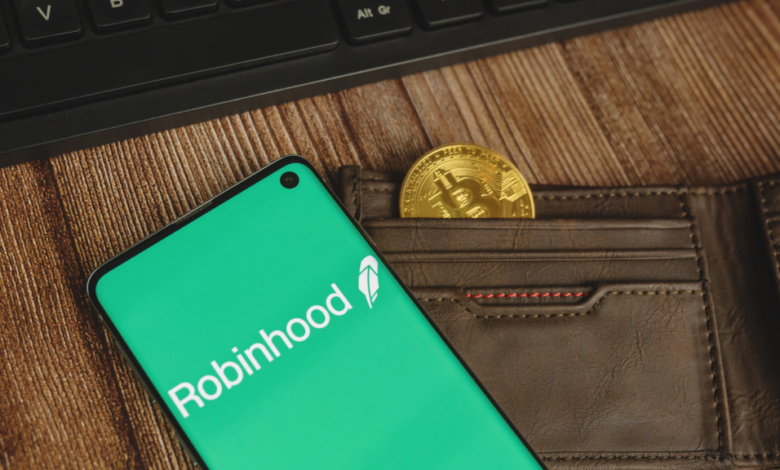Robinhood vs. SoFi: Which Has the Revenue Streams to Win the Fintech Race?

If you just started following Robinhood stock (NASDAQ:HOOD) stock in 2023, you’d probably think you were watching one of America’s great companies, given its stock is up 77% over the past year and 41% in the first four months of 2024.
Unfortunately, that’s not the whole picture. HOOD stock has traded below $20 since December 2021, more than 28 months ago.
Its latest resurgence is due to a record-setting S&P 500 combined with the rebirth of cryptocurrencies. The combination has put a fire under the digital trading platform’s revenues.
As a result, InvestorPlace contributor Alex Sirois recently called it a must-buy Nasdaq stock under $20. My colleague pointed out that the launch of a credit card is one example of Robinhood management’s desire to diversify its revenue streams. That’s a fair point.
However, if diversification is the desired outcome, investors might be better off looking at SoFi Technologies (NASDAQ:SOFI).
Here’s why.
Robinhood’s Revenue Streams?
Page 16 of Robin Hood’s 2023 10K indicates that it has five types of assets under custody (AUC): Equities, Cryptocurrencies, Options, Cash Held by Customers, and Receivables from Customers. As of Dec. 31, 2023, AUC totaled $102.6 billion, up from 62.2 billion in 2022. Of the gains, $17.1 billion was from net deposits, while $23.3 billion was from net market gains.
So, it grew new assets by 27% in 2023, with an average revenue per user (ARPU) of $80, up $20 from 2022 but down $23 from 2021 during the meme-stock craze.
Its revenues are broken down into three silos: Transaction-based (42% of $1.87 billion in 2023 revenue), net interest (50%), and other (8%). A real positive is that it had almost the same revenue in 2021, but its operating expenses were 44% higher.
The company has carried out three tranches of layoffs over the last couple of years, which explains the lower expenses in 2023 and the $536 million in adjusted EBITDA (earnings before interest, taxes, depreciation, and amortization) in 2023, well ahead of the $94 million loss in 2022.
In the end, Robinhood generates half its revenue from interest on its corporate cash, margin loans to users, Cash Sweep, and interest from its securities lending for short sellers.
SoFi’s Revenue Streams
In 2023, SoFi’s adjusted net revenue was $2.07 billion, $200 million higher than Robinhood. Robinhood’s revenue growth was 37%, 200 basis points higher than SoFi’s. That’s remarkably similar.
Its revenues are also broken into three silos: Lending (63% of 2023 revenue), tech platform (17%), and financial services (20%). While it leans on lending for more revenue generation today, tomorrow will look different.
SoFi’s annual adjusted net revenue has increased yearly from $451 million in 2019 to $2.07 billion in 2023, a compound annual growth rate of 46.4%. Robinhood’s 2019 net revenue was $277.5 million, for a four-year CAGR of 61.1%, considerably higher than SoFi.
However, the two-year CAGR looks much better for SoFi at 43.2% compared to 1.5% for Robinhood.
This explains, more than anything, why it sought revenue diversification with its July 2023 acquisition of X1 for $104 million. The no-fee credit card with rewards was an inexpensive way to enter the credit arena quickly. It was a smart move.
Much is made of SoFi’s student loan portfolio. However, as I said last November, it’s not nearly as important to the company’s interest income as its personal loans, which have much higher interest rates.
As of Dec. 31, 2023, SoFi had a personal loans portfolio of $14.50 billion, more than double its student loans portfolio of $6.45 billion. The number of personal loans outstanding in 2023 rose 33% to 1.11 million, again double that of student loans outstanding.
More importantly, the weighted average coupon rate for personal loans at the end of December was 13.8%, 2.5x the student loan weighted average coupon rate of 5.6%.
The Bottom Line
The two companies’ income statements are similar regarding top-line revenue and bottom-line non-GAAP EBITDA profitability.
However, I don’t think you should consider that validation of Robinhood’s business model. Its revenue generation is far less consistent than SoFi’s. A credit card isn’t going to change that. It needs more financial products than its customers need and want beyond trading stocks, options, and crypto.
If you’re looking for a business with legs, SoFi is the better option, despite the excellent work it has done trimming its overhead.
I wouldn’t buy Robinhood, but that doesn’t mean you shouldn’t.
On the date of publication, Will Ashworth did not have (either directly or indirectly) any positions in the securities mentioned in this article. The opinions expressed in this article are those of the writer, subject to the InvestorPlace.com Publishing Guidelines.



